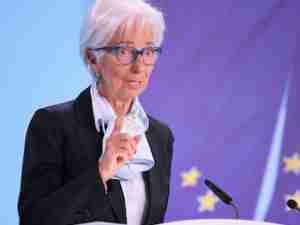A trade war between the U.S. and China probably would take a bite out of the world’s two-largest economies but wouldn’t do enough damage to pitch either into recession, provided it’s contained.
The nations would suffer a material reduction in output from the disruption in trade and higher prices that would result from a tariff battle, economists say. The damage could be compounded if the back-and-forth moves trigger a confidence-sapping swoon in global stock markets.
Yet even with all that, the betting is that both economies are strong enough to take the hit and keep on growing soundly—unless the clash spirals out of control to include an ever widening range of products, increasingly higher import levies and a complete collapse of equity prices.
“A trade war lite between the U.S. and China does meaningful damage but doesn’t trigger a recession in either country,” said Mark Zandi, chief economist at Moody’s Analytics Inc., in West Chester, Pennsylvania.
President Donald Trump plans to impose tariffs worth as much as $60 billion on Chinese products as early as this week to punish Beijing for what the U.S. perceives as intellectual-property theft from American businesses, according to two people familiar with the matter.
The administration is said to be considering wide-ranging levies on everything from consumer electronics to shoes and clothing made in China, as well as restrictions on Chinese investments in the U.S.
Relax Tensions
China has sought to play down the possibility of a confrontation with the U.S. Speaking Tuesday at the end of the annual National People’s Congress, Premier Li Keqiang said that the government plans to further open the manufacturing sector to competition and won’t force foreign companies to transfer technology to domestic ones while doing so.
“We don’t want to see a trade war,” Li said.
Chinese policy makers sound like they may want to avoid a clash with the U.S. and could offer to allow more foreign firms into the services sector in order to avert one, said Larry Hu, chief China economist at Macquarie Securities Ltd. in Hong Kong.
The looming trade spat is taking place against the backdrop of an $80 trillion global economy that is firing on all cylinders and is projected by the International Monetary Fund to expand at its fastest pace in seven years in 2018.
It also comes as U.S. growth is being buttressed by a double-dose of fiscal stimulus in the form of lower taxes and higher government spending and while U.S. inflation remains below the Federal Reserve’s 2 percent target.
Trade Fight
Economists say that a tit-for-tat tariff battle between the U.S. and China would pose a bigger threat to global growth than the import levies that Trump has already announced on steel and aluminum.
“In terms of the potential for a major escalation and therefore for a major disruption of world trade, world growth and also financial markets, the risk is much higher,” said Ebrahim Rahbari, director of global economics at Citigroup in New York.
U.S. retailers have warned that the imposition of tariffs on a broad range of Chinese imports would lift costs for American consumers.
“Tariffs are a hidden tax on Americans,” Rick Helfenbein, president of the American Apparel & Footwear Association, said in a statement. “More than 41 percent of clothing, 72 percent of footwear, and 84 percent of travel goods sold in the U.S. are made in China.”
Muted Impact
Be that as it may, the overall impact on the U.S. and Chinese economies will be limited, even if China responds in kind with as much as $60 billion in tariffs of its own, said Peter Hooper, chief economist for Deutsche Bank Securities in New York.
He reckons that the level of U.S. gross domestic product—not its growth rate—may be reduced about by a quarter to a half percent, although there is much uncertainty around that estimate.
“It could cost quite a few jobs in some sectors but it’s not a recession inducer,” Hooper said.
His estimate is roughly in line with similar calculations by Zandi, and by Cornerstone Macro LLC economists Nancy Lazar and Stephanie Roth, who also reckon that a tariff battle would lift the U.S. inflation rate by about 0.3 percentage point and depress monthly job gains by some 50,000. Since January 2017, payrolls have risen an average 196,000 per month.
Zandi said the hit to China could be greater, on the order of 0.9 percent of GDP, although Deutsche Bank economists expect the Asian nation to offset any impact through looser fiscal policy.
Escalation Risk
“Both China and the U.S. are strong enough to withstand a limited trade war,” said Xia Le, chief Asia economist at Banco Bilbao Vizcaya Argentaria SA in Hong Kong.
The risk though is that things don’t end there, with Bloomberg Economics estimating that a global trade conflagration could wipe $470 billion off the world economy by 2020.
“Once a round of such tariffs and counter-measures are started, it can become very unclear when such tit-for-tat actions will stop,” said Nelson Dong, senior partner at the Dorsey & Whitney law firm and former director of the New York-based National Committee on U.S.-China Relations. “That is the essence of the fear of a widespread ‘trade war’ due to such tariffs.”




